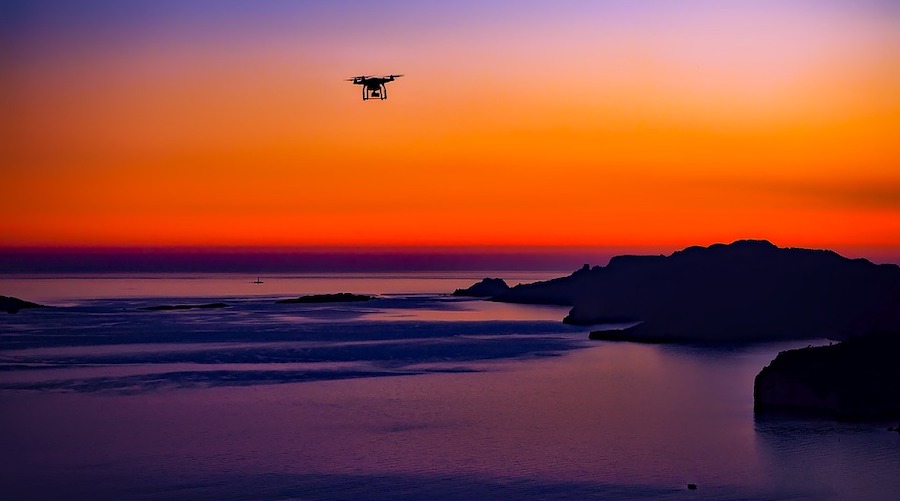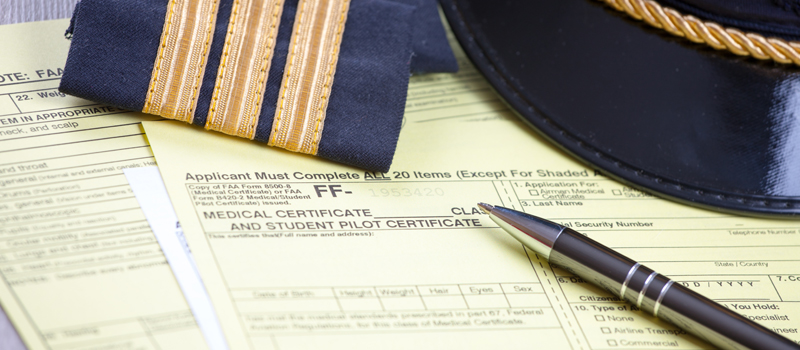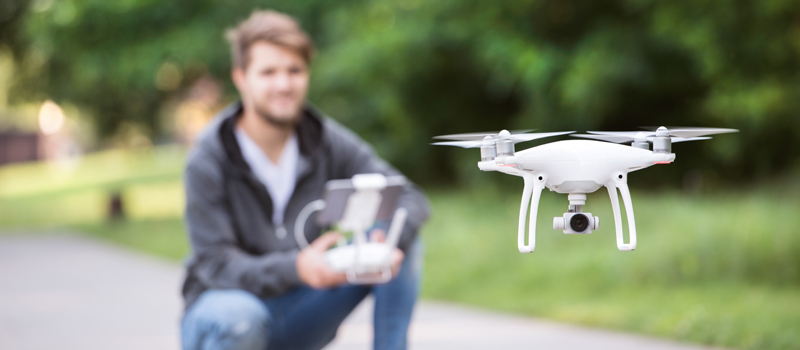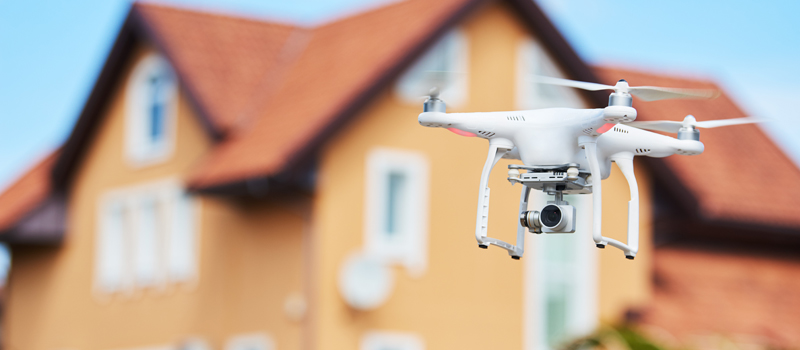-
PRO: Drones are fun to fly
-
CON: Not everyone takes kindly to seeing drones fly near or above them
-
PRO: Drones are cheaper and easier to deploy than manned aircraft
-
CON: Drones can cause damage to property and injury to people
-
PRO: Drones can fly to areas that would have been difficult or impossible to access
-
CON: Drones present privacy issues
-
PRO: Drones can be useful tools for businesses and organizations
-
CON: Legislation on drone flight is uncertain and continues to change
-
PRO: A thriving drone market has paved the way for diverse drone applications
-
CON: The sophisticated drone technologies remain very expensive
- Drone News Update
-
Final thoughts
On the one hand, drones undoubtedly have appeal both because of how fun they are to fly and how they have proven to be useful as commercial or industrial tools. On the other hand, there are still a lot of people who are concerned about the unregulated use of drone technology, especially as a means of surveillance. Just as with any form of technology, drones can be good or bad depending on the purpose of the people flying them.
In this article, we take a look at both sides of the coin and present both the good and bad sides of drone technology.
PRO: Drones are fun to fly
With the increasing number of drone pilots and drones becoming more mainstream, the “fun” factor of drones is certainly a huge contributing factor to the growth of the industry. Modern drones are remarkably easy to fly and even come with beginner modes that can help a person who has never used a drone before to get them up and flying in just a few minutes.
Advances in communication technology have helped drones become more responsive to user input and have increased the range in which drones can maintain connected to the pilot’s handheld controller. With advanced sensors and GPS receivers, drones can maintain stability even in windy conditions and may even have the capability to avoid obstacles automatically.
Adding to the entertainment factor is the ever-growing list of automated camera and flight modes of many drones. These features allow drone pilots to capture highly dynamic shots that would have been very difficult to pull off manually. Through a masterful combination of these camera modes, even an amateur drone photographer or filmmaker can create professional-grade photos and clips.
CON: Not everyone takes kindly to seeing drones fly near or above them
Drone pilots are probably familiar with the experience of drawing small crowds whenever they are out flying drones. People are naturally curious about drones and might ask questions or, at least, take a few minutes to look at what you are doing. However, the opposite of this experience is also not uncommon – people demanding that these drones stay away from them.
Over the past few years, there have been numerous reports of drones being literally shot down by guns. This is a story that gets told over and over – a person shoots down a drone that is flying near or above their property because of concerns over their safety or privacy, or simply because they believed that the drone should not be flying inside their private property.
As we shall see later on, fears over privacy, safety, and security are not completely unfounded. There have also been numerous cases where drones have been used for less than benign reasons. However, shooting down a drone is akin to damaging private property – it’s illegal. In just about all cases of drones being shot down, the court always rules in favor of the owner of the drone.
However, that does not take away from the fact that drones still conjure a negative image. In sci-fi movies, drones are almost always depicted as surveillance tools used by evil corporations or unscrupulous individuals. Drones have also gained a reputation for being used by criminals, either to cause harm or to smuggle goods illegally.
While it’s not impossible for drones to be used for evil means, drones have also proven essential for business and humanitarian operations. At the end of the days, drones are just like any technology – they can be either good or bad depending on how people use them.

PRO: Drones are cheaper and easier to deploy than manned aircraft
Drones have taken the place of helicopters in many industries that require air support. Notable examples include police surveillance, news coverage, aerial mapping, and emergency response. Air supports is invaluable in these fields as it allows them to cover a lot of ground quickly and gives them a much wider vantage point than if they were restricted on the ground.
Before drones, a huge expense went into flying or tenting a helicopter. Rates can vary between models, but helicopter rental can range from $600 to $800 per hour. There’s also the extra work and time needed to secure the clearance of the local authorities to fly a helicopter, whether it’s over rural or urban areas.
In comparison, $2000 will already be enough to purchase a drone at the upper-middle-range in terms of quality and features. For agencies with a bigger budget, $4000 to $5000 will be enough to buy one of the best models that the drone industry has to offer. Aside from spare parts and replaceable accessories, buying a drone is typically a one-time expense. This can result in huge savings for companies that regularly require air support.
There’s also the matter of clearance. Unless you’re in a spot of restricted or controlled airspace, then there is no need to secure any authorization to fly a drone. And even if you were in controlled airspace because of a nearby airport, asking for authorization from the FAA is a process that can be done in a few minutes. This added flexibility has gone a long way in making drones fairly reliable air support tools.
CON: Drones can cause damage to property and injury to people
The small and lightweight design of drones, plus the fact that they are unmanned, has helped in making them a lot less regulated than manned aircraft. However, this does not mean that they do not pose any dangers.
Drones crash all the time due to a host of reasons – loss of signal from the controller, dead batteries, bird attacks, or even a sudden change in wind direction can easily cause a drone to plummet to the ground. There’s also the possibility of drones crashing into manned aircraft. Thankfully, this has not happened a lot but “close calls” are reported almost daily.
In 2014, a reporter of the Brooklyn Paper got injured by a drone that was being used by TGI Friday’s as part of their “Mobile Mistletoe” program. The idea was for the drone to carry a mistletoe, under which couples can share a kiss to celebrate the holidays. However, one drone flew too close to the reporter and clipped his nose, causing profuse bleeding.
In a rather ironic incident, a drone pilot doing a drone safety demonstration in FOX & Friends ended up losing control of the drone and crashing it a nearby wall. Thankfully, the propeller guards on the drone kept it from causing any serious damage. However, the damage to the reputation of the drones had already been done.
During the 2015 annual Gay Pride parade in Seattle, a DJI Phantom 3 suddenly crashed just as it was flying over a crowd of people. This resulted in a woman suffering a cut to her forehead which needed treatment at a hospital. Another man who was hit by a drone suffered a small bump in his head. This story did not end up as well as the others, as the drone pilot – a professional one – was charged with reckless endangerment and was sentenced with a year in jail and a $5000 fine.
There is no shortage of stories that prove that drones can be dangerous. For this reason, effective drone regulation and training is essential in encouraging the social acceptance of drones.
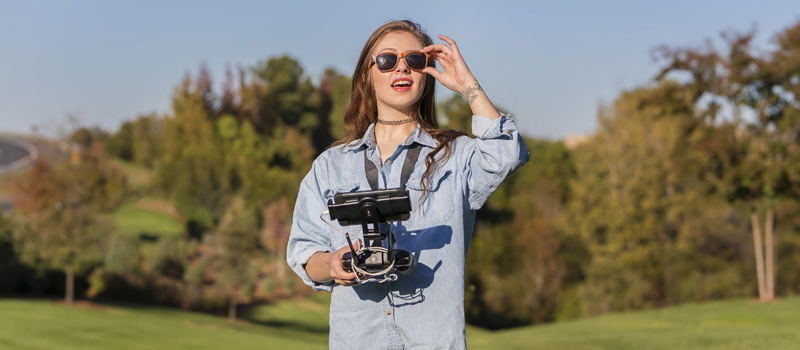
PRO: Drones can fly to areas that would have been difficult or impossible to access
The ability of drones to fly into areas that would have been inaccessible by foot, land vehicles, or even larger aircraft has proven useful time and again. This is especially important in the field of emergency response where every second counts and the speed of response can make the difference between life or death.
Law enforcement agencies around the world are some of the more prolific users of drone technology. They have used drones to speed up search and rescue operations, even going as far as using thermal imaging to identify humans in darkness or in conditions with poor visibility.
They have also been used to aid in responding to actual crimes. By providing live surveillance, police officers can gain a tactical advantage in any situation.
In some search and rescue operations, particularly in the wilderness, immediate rescue may not be possible. For such cases, drones can be used to deliver food and essential supplies so that the stranded parties can survive as they wait for rescue.
Firefighters have also used drone technology for similar objectives. By flying a drone over a site of an active fire, firefighters can be more strategic in how they approach the situation. They can also determine the safest routes or identify any small embers that would have been difficult to spot.
All these examples demonstrate that drones are the perfect complement for many services geared towards public safety. This somewhat balances out the safety concerns over drones, although the mileage of negative media is still hard to beat.
CON: Drones present privacy issues
Privacy is perhaps the most controversial matter when it comes to malicious drone use. With drone technology originating from drones used for espionage, it’s no secret that modern drones can also be used to intrude on the privacy of people. Perhaps, modern drones are even better because they are smaller and have better cameras.
According to a survey done by the Embry-Riddle Aeronautical University, most civilians were wary of drones flying near or above them regardless of who was piloting them, including police officers, professional drone pilots, and hobbyists. They also vehemently opposed the idea of drones flying near them 24/7.
These fears are not without basis. To date, there have probably been several hundred documented cases of privacy violations using drones. In 2018, a family having a peaceful stroll along a beach in Adele Island in New Zealand found themselves being recorded by a drone without authorization. In 2016, a man in Orem, Utah was found in possession of a drone that contained photos and videos of several people shot from the windows of their apartments. He pleaded no contest to a charge of voyeurism.
Fortunately, most drone operators are not using drones for surveillance.

PRO: Drones can be useful tools for businesses and organizations
By now, we already know how valuable drones can be in businesses. Shots taken by drones can help real estate agents gain traction for the properties they are selling. Drones can be used to do a rapid inspection of construction sites, power lines, or large-scale industrial equipment. They can be used for aerial mapping of topography, or for preparation in building a road or digging a mine.
In the next years, it won’t be surprising to see a fleet of drones used for the delivery of parcels. More enterprising individuals have even started studying the possibility of drones being used to aid in the actual laying down of construction jobs for construction.
Drones are inexpensive, quick to deploy, can work rapidly, and can collect accurate data. The new crop of drones has been designed to build on these strengths. They are getting smaller and have better cameras. They avoid obstacles automatically, can be programmed to do customized jobs, and have RTK sensors that can collect location-based data to centimeter-level accuracy.
With the commercial value of drone services, many people have gone the route of being professional drone pilots. For those with the skills, this is a move that makes sense. According to an estimate made by Goldman Sachs in 2019, the commercial drone industry is on pace to reach a value of $13 billion by the end of 2020.
CON: Legislation on drone flight is uncertain and continues to change
Recognizing the increasing number of drones being bought and used in the US, the FAA established 14 CRF Part 107 back in 2016. The Part 107 rules provide the legal framework for all commercial drone services. The goal of these laws is to maintain the safety of the national airspace without hampering the growth of the commercial drone industry.
The Part 107 law was a big deal when it first came along. It was the first law that truly legitimized the use of drones for commercial applications and established clear drone flight restrictions. It also created the remote pilot certificate, or drone license – a piece of paper that a drone pilot must secure to become licensed under Part 107.
In terms of both technology and legislation, the field of drones is still very immature. Thus, there are still a lot of growing pains that continue to this day. It wasn’t so long ago when a community of recreational drone pilots questioned the authority of the FAA to require the registration of drones used for recreation. The win that the pilots got at the time was eventually overturned when the FAA Reauthorization Act came into law, stating in no unclear terms the standards for drone registration, whether for recreational or professional use.
Right now, the FAA is undergoing a review of the proposed Remote ID system that seeks to make all drones identifiable via radio frequency or online. This has been met with a lot of resistance but is the first time that the FAA has made any headway into addressing drone-related privacy issues.
As any entrepreneur can tell you, it’s tough to do business in an environment with lots of uncertainty. Drone regulations continue to change year in and year out. As demonstrated in the Remote ID proposal, these changes can alter the economics of running a business based on a commercial drone service.
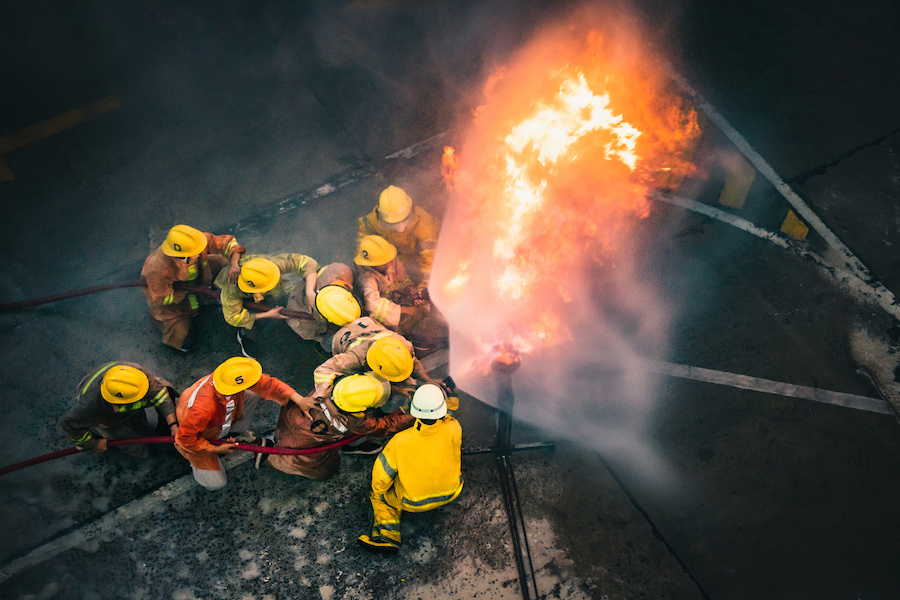
PRO: A thriving drone market has paved the way for diverse drone applications
One thing that we’ve always been excited about is how drones have continued to grow and evolve in the last couple of years. From drones with simple cameras, we now have drones equipped with LiDAR sensors, RTK modules, multispectral sensors, thermal cameras, speakers, and spotlights.
On the more exotic side of things, some drones can be used for active firefighting by having a spray nozzle which is supplied by a tethered connection to a water source. Similar to this concept is a drone that can be used for crop spraying, although this comes with a 10-kilogram reservoir instead.
This doesn’t even mention how modern drones have obstacle avoidance sensors so advanced that they can create a 3D model of their surroundings. A lot of recently launched models also have smart subject tracking features that are designed to predict the movement trajectory of a subject, even when it moves out of sight of the drone’s camera.
Diversification has also happened in the market for third-party drone accessories. Drone parachutes have made it safer (and legal) for drones to fly over crowds. Small GPS trackers help drone pilots track their drones, even if they get into a crash. Strobe and orientation lights are essential accessories when flying a drone at night.
With drones getting smarter and more powerful, it is only reasonable to expect that more and more industries, companies, and individuals will find some way to make drones valuable to their needs.
CON: The sophisticated drone technologies remain very expensive
As with any technology that pushes the boundary of what’s possible, many of these advanced drones remain firmly beyond the budget of most people or organizations. One of the more egregious examples of this is the DJI Agras MG-1 crop-spraying drone which costs around $15,000. At that price range, it’s not a drone that many farmers would even consider buying.
The same can be said of particularly uncommon drones and accessories such as thermal cameras, LiDAR sensors, and RTK modules partnered with ground stations. A drone setup with these components can easily cost anywhere between $5000 to $10,000. Buying advanced equipment can provide a competitive edge, but these are certainly too expensive for a drone pilot who’s still early in their career.
As the commercial drone industry becomes more competitive, it becomes apparent that a drone pilot needs to have a somewhat expensive drone to even be noticed by clients. Add to that the costs of Part 107 certification and training and you’re really going to need significant investment to even get started in a professional drone career.
Final thoughts
At this point, most people probably acknowledge that drones are here to stay. With more and more of them being used for commercial reasons or for fun, there’s no question that they will continue to be a significant part of the industrial landscape and personal recreation. From simple fun to advanced data collection, modern drones run an expansive gamut of possible uses.
However, it also only takes a cursory look at drone-related news to conclude that the technology isn’t perfect. The same characteristics that make drones attractive also make them agents for violating the privacy of citizens or posing threats to safety and security. So far, legislation has not caught up with all these issues, further souring the reputation of drones.
Running a drone business also isn’t easy in the face of drone-related laws that seem to evolve every year. This process of evolution probably won’t stop soon, especially as public concerns grow and drone technology continues to evolve.
Contents
